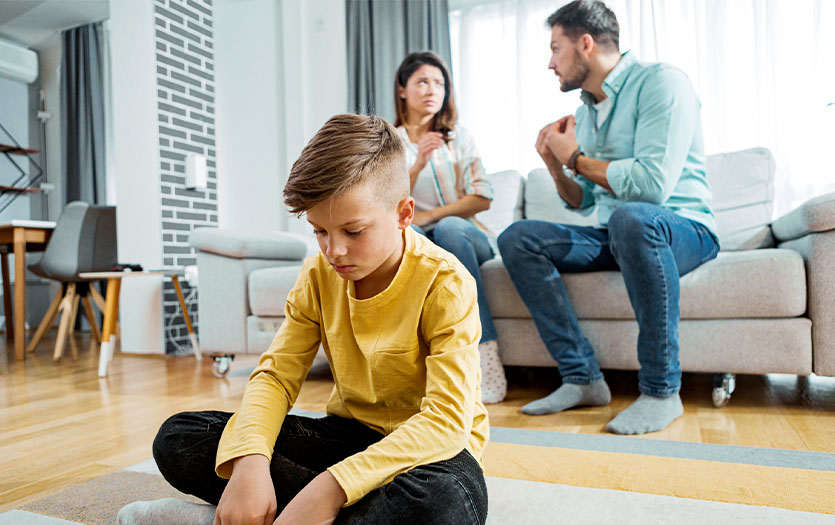
This post was written by Wenyao Yu, PsyD, clinical psychologist, and Kristen Varian, PsyD, HSPP, clinical psychologist, Parkview Behavioral Health Institute.
October 2023 marks the 34th National Domestic Violence Awareness Month. Over the years, we have made significant progress in recognizing domestic violence and supporting survivors. Yet, domestic and intimate partner violence continues to impact more than 10 million adults yearly in the United States. Here, we’re going to talk about this type of violence and the negative effects it can have, as well as how domestic violence was impacted by COVID-19.
What is domestic violence and intimate partner violence?
In daily conversation, you may see these two terms used interchangeably. While domestic violence applies to violence regarding two parties in the same household, intimate partner violence includes any behavior that one intimate partner (current or former) uses to establish power and control over another intimate partner.
Both domestic violence and intimate partner violence may include physical or sexual violence and/or financial, emotional/psychological, cultural, spiritual and reproductive abuse, as well as other forms of controlling behaviors. It is also important to note this violence does not only happen to women. While 1 in 4 women will experience physical violence from a partner in their lifetime, 1 in 7 men will experience the same, and both men and women can be perpetrators of intimate partner violence.
What are the impacts of domestic violence?
For survivors of domestic violence or intimate partner violence, the impacts are profound and affect multiple aspects of their life. Common impacts include psychological, financial, emotional, and physical impacts.
Financial and housing
According to the National Network to End Domestic Violence, between 22% and 57% of all homeless women reported that domestic violence was the immediate cause of their homelessness. And, 38% of all victims of domestic violence become homeless at some point in their lives. It is common that abusers sabotage victims’ economic stability through financial or economic abuse. Such abuse is more evident and common among immigrant populations.
Economic/financial abuse involves maintaining control over financial resources, withholding access to money or attempting to prevent a victim/survivor from working and/or attending school to create financial dependence as a means of control. With the financial stress that many individuals have experienced throughout the COVID-19 pandemic, it is easy to see how the addition of the pandemic exacerbated the complexities of financial abuse.
Emotional and psychological
Common reactions to domestic violence or intimate partner violence include fear, learned helplessness and post-traumatic stress disorder. The fear associated usually includes fears of staying and being hurt again, and fears of leaving and being stalked and acted upon even more violently. Stress is often connected with domestic violence or intimate partner violence and may lead to physical and mental illness.
Emotional and psychological abuse usually involves trauma to the victim caused by verbal abuse, acts, threats or coercive tactics. Perpetrators use emotional and psychological abuse to control, terrorize and denigrate their victims. Some common behaviors of emotional and psychological abuse include:
- Humiliating the victim
- Controlling what the victim can/cannot do
- Withholding information from the victim
- Isolating the victim from friends/family
- Stalking
- Gaslighting
Physical
A common myth about domestic violence is the requirement of physical abuse resulting in visible injuries. Although visible signs of abuse do occur, physical abuse may not result in visible signs or intense pain. In a more comprehensive way, physical abuse may look like the following:
- Scratching, punching, biting, strangling, choking or kicking
- Throwing items at the victim, like a phone, book, shoe or plate
- Pulling hair
- Pushing or pulling, or forcibly grabbing clothing
- Threatening to use or using a gun, knife, box cutter, bat, mace or other weapon
- Touching any part of the victim without permission or consent
- Forcing the victim to have sex or perform a sexual act
- Grabbing the victim’s face
- Preventing the victim from leaving or forcing them to go somewhere
More than 1 in 4 women have experienced rape, physical violence and/or stalking by an intimate partner in their lifetime. Similarly, according to the Centers for Disease Control and Prevention (CDC), 1 in 3 women and almost 1 in 6 men have experienced sexual violence in their lifetime. Sexual abuse refers to any behavior that pressures or coerces someone to do something sexually that they don’t want to do.
Domestic violence survivors often present with various physical illness and chronic illness stemming from physical and sexual abuse, as well as the chronic stress and emotional distress from domestic violence.
How does domestic violence affect children and pets?
Children and pets may become the direct victim of domestic violence, and children often suffer from long-term emotional impacts as witnesses of domestic or intimate partner violence. These situations create a violent and hostile environment that can have devastating effects on children. Common reactions include anxiety, fear and worries about the safety of themselves or family members. Some long-term impacts on children include:
- Higher likelihood to engage in violent behaviors and to be engaged in a variety of violent and non-violent crimes
- Difficulties with building relationships with others
- Higher likelihood to have abusive relationships with others
- Greater risk of health problems such as cancer, heart disease, depression and substance abuse
For survivors who own pets, animal abuse is a common problem. As much as 57% of victims may experience verbal threats by the abuser against their pets, and 77% have witnessed physical abuse of their pets. While survivors have many challenges when it comes to seeking services for help, pet services remain one of the greatest challenges. Up to 40% of domestic violence victims remain in abusive relationships due to difficulties with pet accommodations.
How did COVID-19 impact domestic violence?
Research indicates there was a significant increase of domestic violence incidents during the COVID-19 shelter-in-place orders. Based on data provided by the National Domestic Violence Hotline (NDVH), the number of people who contacted the hotline in 2020 increased by 9% compared to the same period in 2019. During March 2020, the number of people who contacted the hotline decreased by 6%, demonstrating a significant period in which survivors were unable to safely access support. The significant increase in violence specifically toward women during the pandemic has now been referred to as The Shadow Pandemic by the United Nations.
Among those who contacted the hotline during the COVID-19 shelter-in-place orders, the NDVH noted that about 10% cited COVID-19 as a condition of their experiences. While the nature of such an increase remains unknown, there are several factors associated with the increase in incidents.
- Close physical proximity due to stay-at-home orders:
- Social isolation
- Increased attempts by abusers to exert power and coercive control
- Financial difficulties:
- Unemployment and economic distress
- Emotional and psychological distress:
- Marital conflict
- Care and homeschooling of children
- Illness or death caused or exacerbated by the virus
- Substance and alcohol use
What is the cycle of abuse?
It is important to note that abuse most often occurs in a cycle and is a pattern of behavior. Domesticshelters.org provides a helpful infographic regarding the cycle of abuse that demonstrates the following stages:
- TENSIONS BUILD: The abuser creates tension and the survivor’s stress builds.
- INCIDENT: The abuser lashes out through physical, verbal, psychological or sexual abuse tactics to dominate the survivor.
- RECONCILIATION: The abuser makes excuses or attempts to apologize for the incident.
- CALM: Things seem peaceful, maybe even better than before. But often, this doesn’t last long before the cycle starts over.
It can be incredibly challenging to get out of the cycle because leaving the relationship can be very dangerous. Many survivors stay in abusive relationships because they believe the cycle will end or they fear for their life if they try to leave. Please see the helpful resources at the end of this post regarding safety planning for leaving an abusive relationship.
While it can be challenging and uncomfortable to acknowledge the current struggles regarding domestic and intimate partner violence in the United States and around the world, it is important to continue to bring awareness to this important issue. Awareness can help survivors access resources and get the help they need to break the cycle in safe and supportive ways. It’s also important we support the well-being of our communities and the individuals within them to prevent intimate partner violence in the future.
Resources
Many organizations offer support to survivors of domestic violence and intimate partner violence. The following are some useful tools for survivors:
Thehotline.org – Tips of building a case for domestic violence.
DV and Economic Justice – Economic justice and financial support.
National Domestic Violence Hotline – Safety planning tips with children.
The Indiana Coalition Against Domestic Violence - Helpful for identifying local resources all across Indiana.
References
Cleary, M., Thapa, D. K., West, S., Westman, M., & Kornhaber, R. (2021). Animal abuse in the context of adult intimate partner violence: A systematic review. Aggression and Violent Behavior, 61, 1-17. h
Craig, H. and Kippert, A. (2022). What is the cycle of abuse? Domesticshelters.org. Retrieved from:
Huecker MR, King KC, Jordan GA, et al. Domestic Violence. [Updated 2023 Apr 9]. In: StatPearls [Internet]. Treasure Island (FL): StatPearls Publishing; 2023 Jan-. Available from:
Piquero, A. R., Jennings, W. G., Jemison, E., Kaukinen, C., & Knaul, F. M. (2021). Domestic violence during the COVID-19 pandemic-Evidence from a systematic review and meta-analysis. Journal of criminal justice, 74, 101806.
United Nations Women. (2021). Measuring the shadow pandemic: Violence against women during COVID-19. UN.



